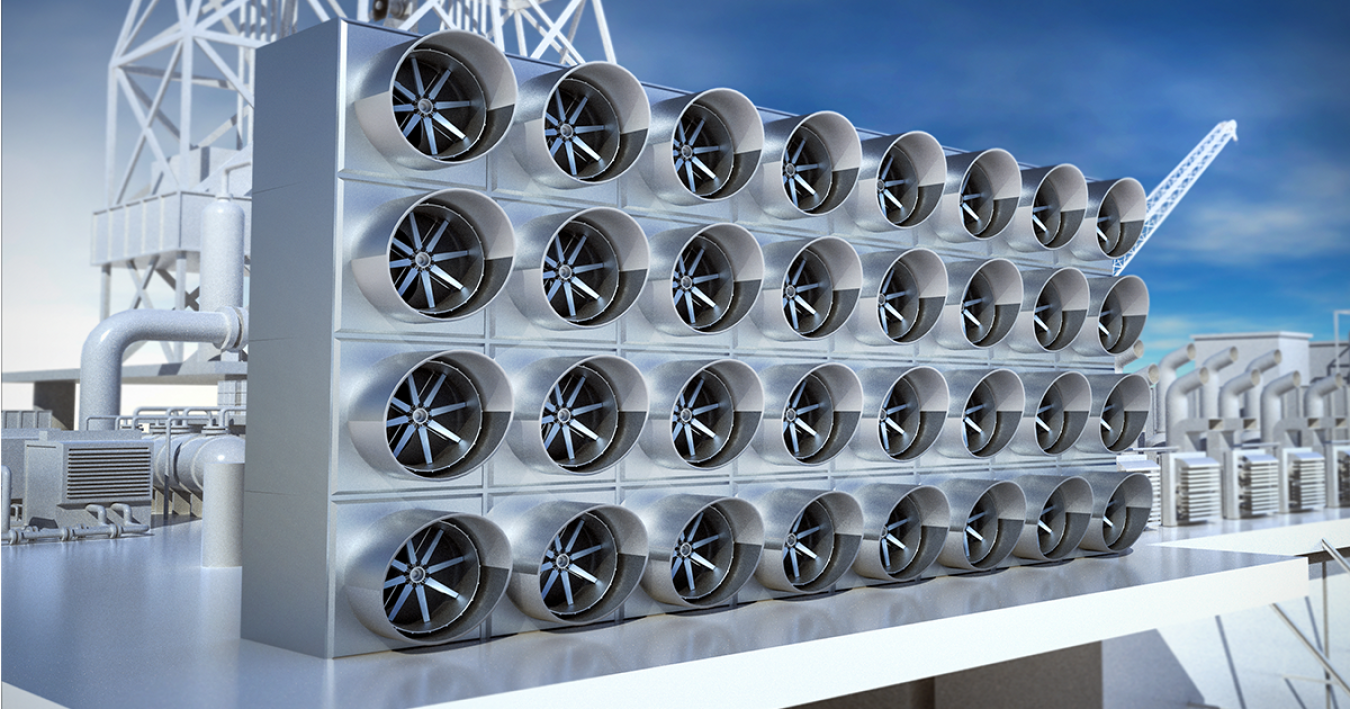 A US Department of Energy (DOE) report has suggested pairing advanced reactors with carbon dioxide removal technologies, including direct air capture. DOE says advanced reactors could lower the levelised cost of certain direct air capture technologies by up to 13% compared with non-nuclear-powered systems. This could also boost reactor performance and market feasibility.
A US Department of Energy (DOE) report has suggested pairing advanced reactors with carbon dioxide removal technologies, including direct air capture. DOE says advanced reactors could lower the levelised cost of certain direct air capture technologies by up to 13% compared with non-nuclear-powered systems. This could also boost reactor performance and market feasibility.
The 72-page report – Assessment of Nuclear Energy to Support Negative Emission Technologies (NETs) – explores the role NPPs could play in supporting a range of negative emissions technologies. Researchers found direct air capture to be especially promising. According to the study, the most promising nuclear NETs included Direct Air Capture (DAC), Indirect Seawater Capture (ISC), Engineered Enhanced Weathering (EEW), Pyrogenic application to Carbon Capture & Storage (PyCCS), and gasification.
The study focused on pairing low-temperature solid sorbent and high-temperature liquid solvent direct air capture systems with three advanced reactor types – an advanced pressurised water reactor, a sodium-cooled fast reactor (SFR), and a very high temperature reactor (VHTR).
Two DAC systems were selected for the analysis based on available data and previous research by the National Energy Technology Laboratory. Researchers analysed solid direct air capture systems using nuclear heat and electricity. They also looked at a combination of natural gas heat and nuclear electricity for liquid direct air capture plants.
Those results were then compared with previous DAC studies that were fully powered by fossil fuels. This showed that nuclear reactors could lower the levelised cost by up to 13% for solid direct air capture systems and up to 7% for liquid systems, making them more economic to deploy.
DOE says direct air capture is one of the most mature carbon-removal technologies available, but it is an energy-intensive process that leads to high costs. The systems need electricity to power fans, pumps, compressors, water cooling systems, and air separation units. They also need heat to drive the chemical reactions that regenerate the solvent or sorbent and concentrate the carbon dioxide.
Study results showed that pairing the systems with any of the three reactor types would benefit from the large amount of carbon-free and constant electricity output. Solid direct air capture systems would benefit from the reactors’ low-temperature heat and, with future technological improvements. Liquid direct air capture systems could benefit from high-temperature heat provided by sodium-cooled fast reactors and very high temperature reactors.
Leveraging the carbon-free electricity and heat from advanced reactors would also allow the systems to be smaller and less expensive to operate since their emissions footprint would be smaller compared with traditional systems powered by natural gas or grid electricity.
DOE’s Office of Nuclear Energy Systems Analysis & Integration campaign conducted the study with contributions from researchers at Argonne National Laboratory, Idaho National Laboratory, and the National Energy Technology Laboratory. DOE says initial results confirm nuclear energy’s potential in reducing carbon dioxide removal costs for both direct air capture systems.
However, more analysis is needed to identify optimal systems. The study recommended several follow-up analyses for further investigation:
- Additional NET processes, such as PyCCS, gasification, ISC, and EEW, should be considered for detailed analyses. Other DAC systems such as electro-swing absorption and reactive membrane-based DAC could also be considered. Finally, the use of high-temperature heat from NPP in L-DAC systems should be revisited. The flexibility of NET systems, including DAC, could be further investigated.
- The work could be extended to CO2 capture from flue gas to reduce emissions from various industrial processes (such as coal gasification for synfuel production or fossil-fuel power plants. Those may use different CO2 capture technologies that could be considered as well for coupling with NPP.
- Siting analysis of the NPP&DAC processes could be performed to assess locations that would be suitable for both NPPs and NET processes, with CO2 geologic sequestration potential, water availability, biomass resource, access to markets etc.
- Detailed life-cycle and market analyses could be completed on the nuclear NET process to assess economic and environmental trade-offs: production of electricity vs negative emissions, and sequestration of CO2 and bio-fuel vs industrial use leading to CO2 release to the atmosphere.
- Detailed market analyses could be completed to make a clearer case for the economic viability of nuclear NET processes.
DOE estimates reaching the Biden Administration’s goal of net-zero emissions by 2050 will require between 400 million and 1.8 billion metric tons of carbon dioxide removed from the atmosphere each year. The Department recently announced more than $1bn to develop two commercial DAC facilities in Texas and Louisiana through its DAC Hub programme.
Image: Artist's rendering of a direct air capture CO2 removal system (courtesy of US DOE)



